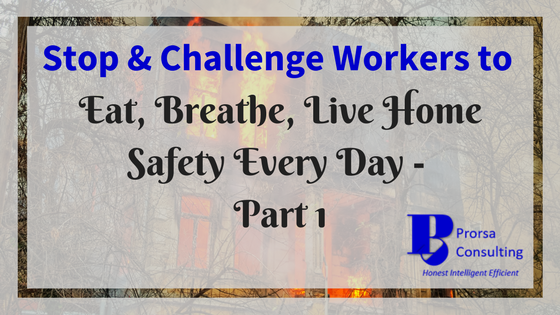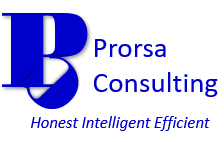Stop & Challenge Workers to Eat, Breathe, Live Home Safety Every Day – Part 1
By : Admin -

Most executives, business owners, and managers will tell anyone that safety is a top priority in business. Companies recognize the essential role workers have in overall business health and profitability. As such, organizations spend time and money on safety training for employees. However, safety does not stop at shift’s end. The best safety programs and management systems possess components addressing employee safety outside of the workplace. Join me as we begin to explore the education we can give workers to eat, breathe, and live home safety every day.
Inside the Home Safety
Homes have hazards just like the job site. Risks of fire, severe weather, and electrocution exist in residences just like they do at facilities. Additionally, houses can have slip, trip, fall dangers.
Fire Hazards
To address fire hazards in the home, workers should be aware of the following:
- Exercise caution around open flames (candles, gas heaters, gas stoves, etc.) and heat generating appliances
- Clean dryer lint filters on a regular basis
- Don’t use tools or appliances with damaged cords or plugs
- Make sure smoke detectors are present on all levels of the home
- Test detectors at least monthly – having set day each month like the first Saturday helps with consistency
- Change detector batteries at least twice a year – many people utilize the daylight saving time changes to help remember to perform this task
- Ensure your kitchen is equipped with an appropriate fire extinguisher in good working condition
- Don’t forget PASS – Pull, Aim, Squeeze, Sweep
- Develop and practice a fire escape plan with your family periodically, including a designated meeting spot outside the home and how to utilize any escape ladders
- Owners multiple story homes should have escape ladders available in every occupied bedroom on the upper levels
- If you or your clothes ever catch fire . . . STOP, DROP, and ROLL!
More fire prevention information and resources can be found at the U.S. Fire Administration’s Outreach webpage.
Severe Weather
Responding to severe weather at home is not much different from a response in the workplace. Review the following tips with employees to make sure they know how to stay safe in severe weather at home:
- Regularly check the weather forecast so you know when weather may turn severe.
- Know the alarms for the emergency warning system in your community.
- Purchase a weather radio to stay informed during severe weather events.
- Seek shelter during heavy rain and hail storms.
- Go indoors during lightening storms and refrain from using electronic equipment.
- During tornados, seek shelter on the lowest level of your home in an interior, windowless room. If caught in a tornado while driving, exit the vehicle and lie face down in a low-lying spot (like ditch). Stay as far away from cars and trees as possible.
- When hurricanes, floods, or wildfires are imminent, evacuate the area as instructed by government officials and emergency responders.
For more information on severe weather safety, visit the National Weather Service’s Safety page.
Electrical Safety
Electricity surrounds us at work and at home. Share this information with employees to reduce the risk of electric shock at home:
- Avoid using damaged electrical cords and plugs.
- Never use more than one extension cord with a piece of equipment. If you can’t reach the location needed, procure a longer extension cord.
- Use the plug to unplug electronic devices. NEVER pull the cord.
- Make sure you have ground fault interrupter circuits (GFIC) where required and that all outlets are in good working order.
- Don’t use electrical devices during storms with lightening.
- Electricity and water does not mix – keep electrical devices/appliances away from water.
- Use the proper wattage bulbs in all light fixtures.
- Baby proof outlets around young children.
- Make sure sources are deenergized before replacing any hardwired light fixtures in your home.
- Ensure electrical appliances are appropriately grounded.
- Replace damaged beakers in a timely manner.
- Don’t risk it . . . call an electrician when you need to do so.
Get more facts and tips on the Electrical Safety Foundation International’s Home Electrical Safety page.
Slip, Trip, Fall Dangers
As I emphasized in my recent article on slips, trips, and falls in the workplace, these hazards are commonly overlooked. This also holds true in the home environment. Educate workers on the following to help keep them safe:
- Keep doorways, hallways, and other walkways clear.
- Avoid stretching cords and cables across doorways or walkways.
- Use caution on step ladders, remembering that the top brace of the ladder is not a step. Avoid overreaching, awkward movements, and unbalanced loads while using a ladder.
- Protect stairways from entry by small children.
- Alert others when floors are wet & clean up spills promptly.
- Maintain 3 points of contact when ascending or descending stairs.
- Make use of night lights for minimal illumination during late night trips to the restroom, kitchen, etc.
- Take care when transition between flooring types (i.e. tile to carpet) and ensure rugs do not become trip hazards.
Check out the National Institute of Health’s information on fall proofing your home.
Other Worker Safety Training Articles of Interest
How to Craft an Informative EHS Awareness Program for Continued, High-Value Business Wins
Parting Thoughts
These 4 topics are just the tip of the home safety iceberg. Stayed tuned to the blog for Part 2 of this series where we’ll discuss more tips to stay safe outside the workplace.
Prorsa Consulting is available to assist you with your EHS compliance, analysis, and management system needs. Check out our Services page for more information.
Your feedback on this blog’s content is always encouraged. If you found this information useful, be sure to like and/or share below! You can also give your feedback via our Contact Us page.
You can follow Prorsa Consulting on Google+, LinkedIn, Pinterest, and Twitter for regular content updates.
